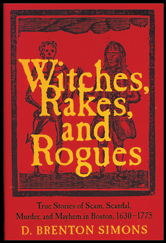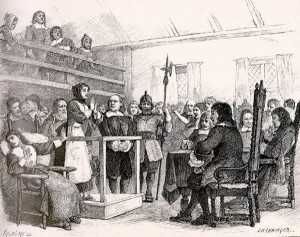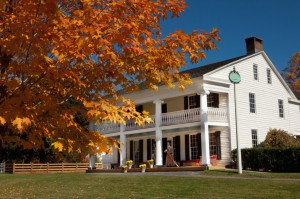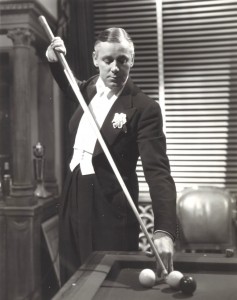 Memorable for her encounter with Hester Prynne in The Scarlet Letter, Mistress Hibbins was not simply a figment of Nathaniel Hawthorne’s imagination. Long a controversial woman in Boston, she was a real person who in May 1656 was sentenced to death for the crime of witchcraft. The widow of an affluent merchant and office holder, Ann Hibbins was, in the words of historian Samuel Adams Drake, a “person of superior quality in life,” and not, as the popular imagination conceives of a witch, a “wretched hag.” Continue reading Witches Brew: Part Three
Memorable for her encounter with Hester Prynne in The Scarlet Letter, Mistress Hibbins was not simply a figment of Nathaniel Hawthorne’s imagination. Long a controversial woman in Boston, she was a real person who in May 1656 was sentenced to death for the crime of witchcraft. The widow of an affluent merchant and office holder, Ann Hibbins was, in the words of historian Samuel Adams Drake, a “person of superior quality in life,” and not, as the popular imagination conceives of a witch, a “wretched hag.” Continue reading Witches Brew: Part Three
Monthly Archives: October 2014
Dead Men (and Women) Tell a Tale
 When I was in elementary school, my class went on a field trip to the Old Village Cemetery in Dedham, Massachusetts, my hometown. I remember running around trying to complete tasks, such as finding the earliest death date and the oldest age listed on a headstone, as well as doing several grave rubbings. Though I’m sure there was a history lesson embedded somewhere in the chaos of twenty nine-year-olds running amok in a cemetery, I have long since forgotten it. What has stayed with me, however, is a love for older cemeteries. Continue reading Dead Men (and Women) Tell a Tale
When I was in elementary school, my class went on a field trip to the Old Village Cemetery in Dedham, Massachusetts, my hometown. I remember running around trying to complete tasks, such as finding the earliest death date and the oldest age listed on a headstone, as well as doing several grave rubbings. Though I’m sure there was a history lesson embedded somewhere in the chaos of twenty nine-year-olds running amok in a cemetery, I have long since forgotten it. What has stayed with me, however, is a love for older cemeteries. Continue reading Dead Men (and Women) Tell a Tale
Thomas M. Menino 1942-2014

In April 2009, the New England Historic Genealogical Society presented Mayor Thomas Michael Menino of Boston (1942–2014) with a specially-bound book on his ancestry compiled by David Allen Lambert. The families of Mayor Menino’s parents – the Mennino/Meninno/Meninos of Grottaminarda (Avellino) and the Sacchettis of Roccagorga (Latina) – were traced back from Boston through Hyde Park and thence to Italy. David identified all of the mayor’s great-grandparents (Tomaso Meninno, Eleonora Del Grosso, Carmine Russo, Raffaela Uva, Stefano Sacchetti, Angela Materocci, Antonio Palumbo, and Tomasina Patrucci) and took the Del Grossos, the Palumbos, and the Patruccis back one more generation.
With Mayor Menino’s death this morning, I am reminded of the production of the book and the evening on which it was presented to Tom and Angela Menino. In the story of the Meninos and the Sacchettis there is much of the history of Italian families in Massachusetts: Continue reading Thomas M. Menino 1942-2014
Witches Brew: Part Two
 Alice Lake of Dorchester became the second person tried and executed in Boston as a witch. While few details of her offenses survive – she was executed circa 1650 – she had two potent strikes against her: she had committed fornication prior to marriage, and she was reputed to have killed an infant she was carrying.
Alice Lake of Dorchester became the second person tried and executed in Boston as a witch. While few details of her offenses survive – she was executed circa 1650 – she had two potent strikes against her: she had committed fornication prior to marriage, and she was reputed to have killed an infant she was carrying.
In 1673, Ann Martin Edmonds, a healer from Lynn with Boston associations, appeared before the Court of Assistants on witchcraft charges, but here the script changes. Continue reading Witches Brew: Part Two
A legacy of witchcraft

The legacy of Salem-born author Nathaniel Hawthorne is that of a great American writer, one whose tales of New England life and Puritanism were a focal point of the Romantic literary movement. His 1835 short story “Young Goodman Brown” became one of his most well-known works. Inspiration for this work was derived from a family history that haunted Hawthorne throughout his life and resulted in a number of literary classics that dismiss or re-evaluate this legacy. Continue reading A legacy of witchcraft
Witches Brew: Part One
 Overshadowed by the hysteria that gripped the townspeople of Salem in 1692, Boston’s considerable witchcraft record has received relatively little attention. From the late 1630s to the 1690s, the town intermittently fell into witch-hunting fervor as accusations coalesced around individual women. (Men in Boston were seldom the subject of witchcraft accusations.) In all, four local women were convicted and executed in Boston witchcraft trials. Their stories – and the stories of other accusations that did not end in execution – reveal aspects of long-forgotten Boston history and the perils of life in a puritanical society that believed in the possibility of such events. Continue reading Witches Brew: Part One
Overshadowed by the hysteria that gripped the townspeople of Salem in 1692, Boston’s considerable witchcraft record has received relatively little attention. From the late 1630s to the 1690s, the town intermittently fell into witch-hunting fervor as accusations coalesced around individual women. (Men in Boston were seldom the subject of witchcraft accusations.) In all, four local women were convicted and executed in Boston witchcraft trials. Their stories – and the stories of other accusations that did not end in execution – reveal aspects of long-forgotten Boston history and the perils of life in a puritanical society that believed in the possibility of such events. Continue reading Witches Brew: Part One
Tackling Hingham vital records
 Having lived in Hingham the majority of my life, and with ancestors who lived there three centuries ago, I ought to have a good grasp of the Hingham records – but not so much. The problem begins with the fact that the Hingham vital records have not been published. For 121 years researchers of Hingham families have relied on George Lincoln’s 1893 History of the Town of Hingham, Massachusetts, as the “go to” source. Because his two-volume section on genealogies is impressive and the vital records are not in print, Lincoln’s work functions as a substitute “vital records.” I used to receive town certificates that referred to the book and page of Lincoln’s History as their source – I should note that I do not know whether that practice is still in use; I hope not. Continue reading Tackling Hingham vital records
Having lived in Hingham the majority of my life, and with ancestors who lived there three centuries ago, I ought to have a good grasp of the Hingham records – but not so much. The problem begins with the fact that the Hingham vital records have not been published. For 121 years researchers of Hingham families have relied on George Lincoln’s 1893 History of the Town of Hingham, Massachusetts, as the “go to” source. Because his two-volume section on genealogies is impressive and the vital records are not in print, Lincoln’s work functions as a substitute “vital records.” I used to receive town certificates that referred to the book and page of Lincoln’s History as their source – I should note that I do not know whether that practice is still in use; I hope not. Continue reading Tackling Hingham vital records
Family Ghosts

October is a magical month when the leaves turn brilliant colors and start decorating the ground as the nights get cooler and darker. No wonder it is a time filled with hearty food, hot cider, and spooky stories told around a fire. Perhaps one reason why people embrace the autumn so readily is the connection to family the season inspires. Throughout the years many fall activities have led me to new discoveries about my ancestors and the ways I can connect with them, particularly at historic places. Continue reading Family Ghosts
Cinema royalty

I am currently helping to research the ancestry of Dame Angela Lansbury for an event NEHGS will hold in November, and part of my work is focused on the theatrical tradition in the family of Miss Lansbury’s mother, Moyna Macgill (1895–1975). Miss Macgill’s career spanned the almost fifty years between 1918 and 1965, but it’s worth noting that at least one of her great-uncles and several of her father’s first cousins preceded her on the London and New York stage, while two of Miss Macgill’s brothers, all four of her children, and assorted descendants and in-laws (including Sir Peter Ustinov and Ally Sheedy) continued in the field.
As I’ve mentioned in some of my blog posts, one of my research interests is old photographs, whether of my own family or as part of an aesthetic appreciation of the form. Continue reading Cinema royalty
A night of staff research

Since coming to work at NEHGS, I’ve been surprised by how often people tell me about their own genealogical research when they learn where I work. They usually tell me I’m so lucky to be working here, and say how they would love to work at such a place. I expect part of this sentiment is due to the belief that we have plenty of time to take advantage of the tremendous resources we have access to, but as passionate as most staff are about genealogy, their own research has to wait until the end of the work day, at which point the demands of life may also prevent people from getting to their research. Continue reading A night of staff research